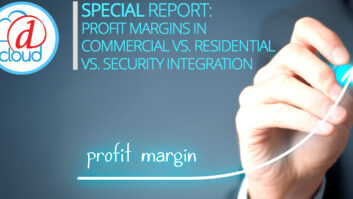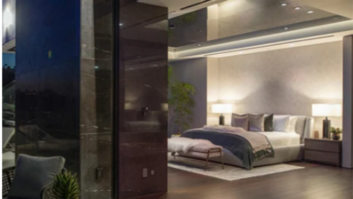The day will come, sooner than you think, when the fat margins we’ve enjoyed in custom installation will melt away. Companies with strong financial footing will prosper, while the puny weaklings will vanish.
Product margins are out of your control. There’s an implicit price for everything you sell, regardless of the higher margins you care to achieve. There are absolute prices, as set by the manufacturer. There are market-driven prices, driven by your competition. And then there are comp prices, even for items a customer is unable to cross-shop. Because virtually everything that we sell has a competitive choice (a comp) there are implied costs for every item in your proposal. So even if you have exclusive marketing rights to a particular brand, you are only partially protected from downward-pricing pressure.
Not only are product margins out of your control, they are continually being driven down. Manufacturers want lower retail prices to spur more sales. Your competitors use discount pricing to make a sale. And then there’s the Internet, the true spoiler of a stable market. For the consumer, the Internet is the great leveler. Admit it, you use Internet pricing all the time to shop for high-ticket items. But when your customers confront your proposal with a list of Internet prices, you boil with rage. Are you angry because your customer’s don’t want you to earn exorbitant margins? Of course you are.
Here’s an example. Your customer wants a popular 37-inch high-def LCD panel. List is $6,000. Authorized dealer Internet pricing is $4,500. Call your local rep/distributor to place an order, and he wants $4,200 plus shipping. If you meet Internet pricing, you’re enjoying a six-point margin. Charge more, and you may lose a customer. CI dealers get beaten up on video all day long. But the historical safe haven in the product world has been cables, speakers and high-priced, high-margin electronics. Yet the safe haven is eroding beneath your feet, too.
First, there’s only so much cable you can run. True, margins are high, but there isn’t enough wire in the job to overcome the LCD panel at six points. Speakers and high-end electronics are facing downward-pricing pressure as well. The “hidden” margins are apparent to your customer because they find it hard to justify spending $800/pair for a typical in-ceiling speaker. Especially when they compare the amount of engineering involved to other $800 consumer electronic items. Think what you can buy for $800-a Dell computer with monitor, a nice digital camera or two i-Pods.
Why doesn’t the comparison hold up? Because Dell has removed the retail mark-up and earns less than 20 points on its computers. So the $800 “retail” computer system has a cost of goods of $650. In the speaker business, a typical plastic $800 retail pair of speakers has a cost of goods of less than $150. With speaker manufacturers making 40-plus points and dealers looking for another 60-plus, the speaker carries 81 percent of gross profit.
The same holds true for high-priced, high-margin A/V. There are projectors on the market priced above a BMW 760. Please… There are “everyday” processors that cost more than a Viking range and Sub Zero fridge combined. These are the comparisons customers make, and more often than not they choose the BMW or the gas range over the A/V, because they offer more perceived value.
CI dealers need high-margin products because the labor side of their business is a profit sinkhole. Mismanaged dealerships cannot charge enough for labor to cover their expenses. They turn, instead, to product margins to cover their losses.
So here’s where we stand: A CI dealer who can’t make money on labor relies instead on product margins to keep afloat. But with reduced margins on video and lower-priced electronics, the only place to earn healthy margins is on higher priced products. These same products stick out like a sore thumb in proposals ($800 for a pair of plastic speakers?) or blow the deal completely. To meet his budget, the dealer often closes a sale by substituting lower priced (but still high-margin) speakers and electronics, bestowing the customer with the poorest performing system.
Have you ever hired an IT consultant to help with your network? They charge by the hour and sell gear at Internet pricing or below. They don’t try to make any money on the parts; they make it all in labor. I’m always a bit hesitant to bring the IT guy in, knowing every time he checks the caller ID on his cell phone it costs me $1.50. And yet, when he tells me I need a new switcher, router or whatever he just said, I know that he can get me the parts cheaper than I can. Do you sell anything to your customers for less money than they can buy it elsewhere? I doubt it.
How would I feel if my IT guy sold me parts at retail prices and also charged me $75/hour, just like you do? I’d feel like asking him for a list of parts, buying them from CDW, and saving the difference. Wouldn’t you? So let’s face it. Customers are crabby, and they don’t like spending money. They get really mad when they think you’re overcharging them for gear. But they’re only partially mad when you tell them how much you’re charging for labor.







